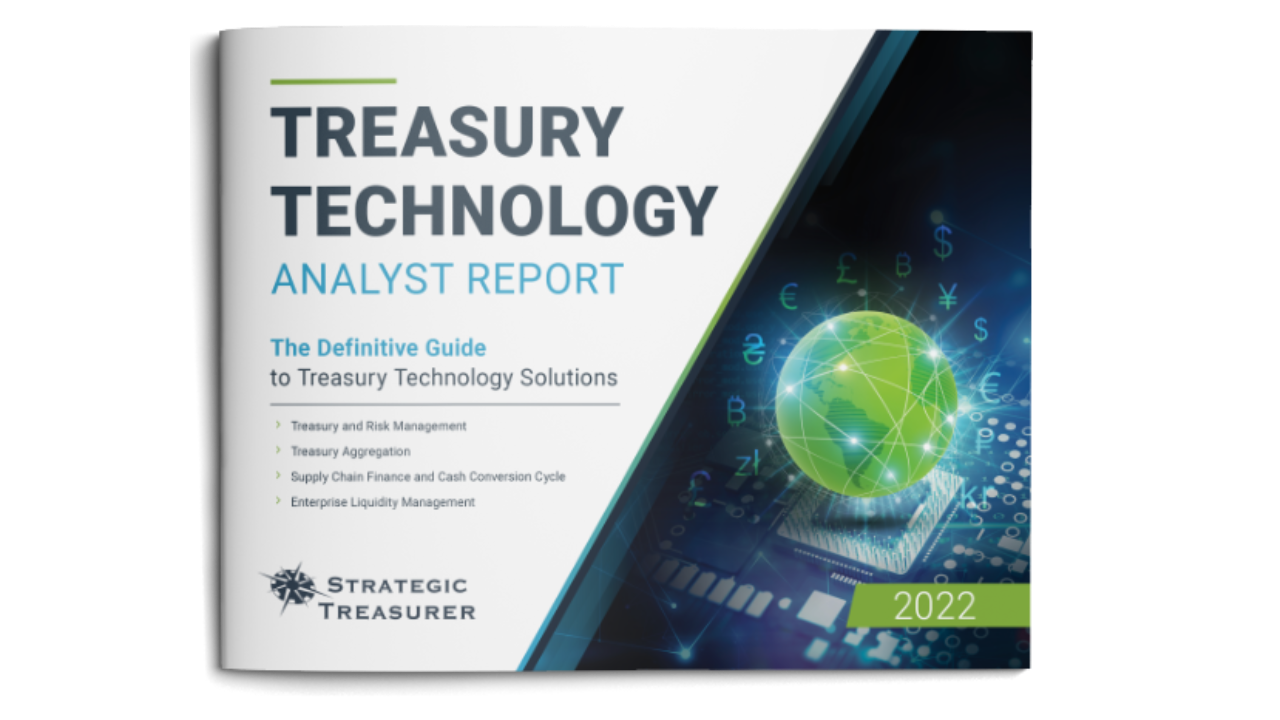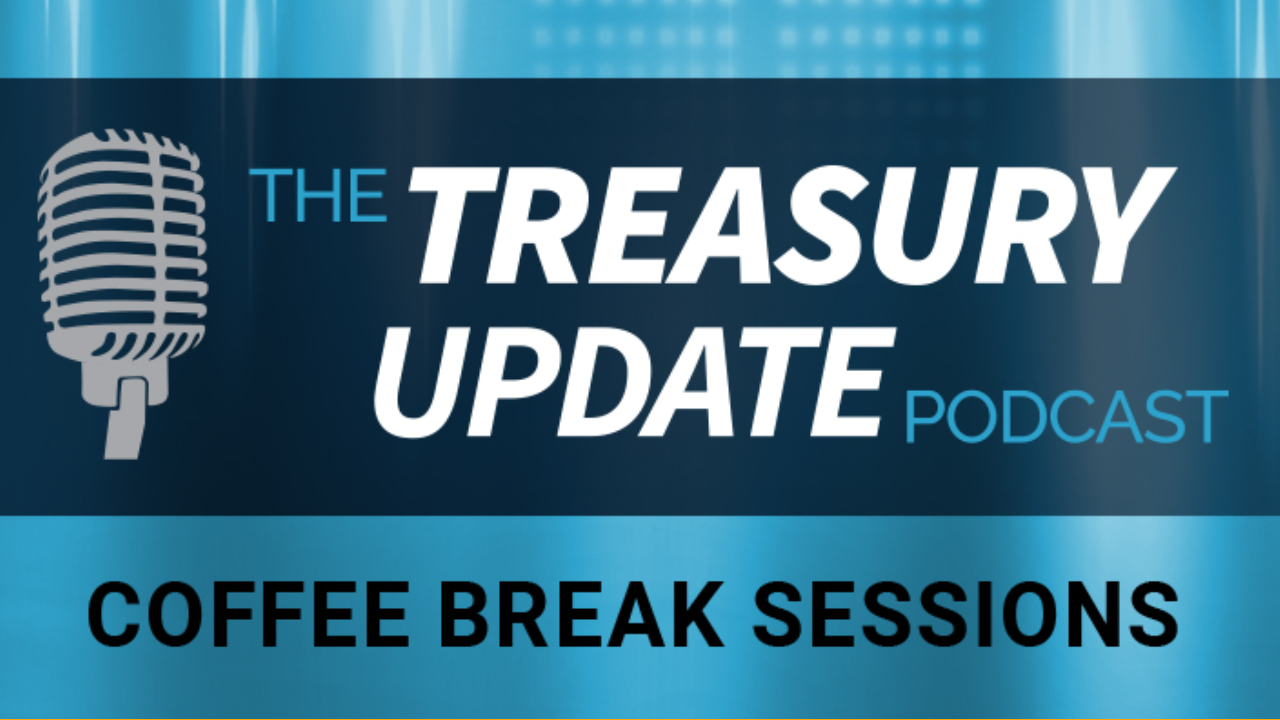
Session 74
Coffee Break Session:
What Are Revolvers?
Host:
Jason Campbell, Strategic Treasurer


Speaker:
Paul Galloway, Strategic Treasurer


Episode Transcription - (Coffee Break Session Series) - Episode 74 - What are Revolvers?
Jason Campbell 00:03
Welcome to the Treasury Update Podcast Coffee Break Sessions presented by Strategic Treasurer covering foundational topics and core treasury issues, and about the same amount of time it takes you to drink your cup of coffee. I’ll be your host Jason Campbell, business development leader at Strategic Treasurer. All right, welcome back to another great episode of Coffee Break Sessions. Today chatting with me is going to be Paul Galloway, Senior Advisor at Strategic Treasurer. And Paul before we get into this, you know this topic here is around revolver. So I just want to make sure their base clear this is revolves around debt and capital itself. And then the continuing of our of our conversations, not necessarily your grandfather’s revolver sitting somewhere in some closet, locked up safely, somewhere. So So Paul, how’s it going today? How are you? How are you?
Paul Galloway 00:49
Doing good, thanks for having me back again.
Jason Campbell 00:53
Good, you know, it’s always good to get to chat with you. I mean, I again, I always find just the way that you articulate around these interesting concepts as it relates to treasury and, and in finance as a whole is quite intriguing. So I’m looking forward to another great episode, and kick it into turning it over to you to kind of walk us through this topic of revolvers. So what are revolvers?
Paul Galloway 01:13
Typically, what happens with companies is they try to look at their balance sheet in totality, at the point that they’re doing that they’re also take into consideration a strategic initiatives. And you know, what’s going on with the organization where it’s going? What is financial position looks like both from a cash flow and balance sheet perspective. And so what they’re doing is they’re planning the total capital structure. And a component of that is this revolver component. And so you think about what are risks to my organization or my balance sheet? In particular, in this case, we’re talking about balance sheet, where are the balance sheet risks, and so they’re trying to determine Do I have enough capital for everything I want to do if the certain particular events were to happen, and these events that they’re considering are negative events, you know, it could be tied to something that’s going on in the industry, it could be economic, you know, we’re seeing all kinds of economic constraints or strains right now is returning to battle inflation, and we’re going to, as a whole, we’re going to feel more pain out there in the markets. So it’s going to be tougher to raise capital. Why? Because the Feds raising rates, and it’s going to squeeze the amount of cash that’s available out there to engage in business activities. So it’s trying to slow things down. What a revolver does is, it’s there in case the organization needs it because something unexpected happened, meaning there was a disruption, the markets dried up, and you need access to capital on a very short term basis for something very specific. And typically, we’re evolvers just sit on the balance sheet. And an organization will just pay that unutilized fee, it’s fee that’s charged for not using the facility, they will only use that revolver for very specific things that are unexpected. When capital is not available to draw upon, because you have capital committed other places. It you need to fund something temporarily, until you’re able to access capital elsewhere. So that’s typically why a revolver exists. And so the revolver itself is you go to a group of banks, it’s typically relationships that you have established today. And these banks are strategic partners for you because, you know, you use them for let’s take an insurance company, because that’s kind of a broad base brush for a good example. So an insurance company will utilize, you know, their banking partners for their operating banking needs. So, you know, they provide lockbox, they provide DD A’s for concentration and collection and disbursements. And then you got banks that they utilize for custodial Service Trust Services, trading services, meaning they execute trades with these banks. So there’s like a broader relationship. As part of that relationship. These banks are willing to commit a certain level of capital in the form of a revolver to the company. It may be that they say, Hey, we want to have a $300 million revolver. Here’s, you know, the kinds of things that this revolver could be used for that You know, we don’t anticipate that we’re going to draw upon it. But given these sets of things that may or may not occur, you know, we could draw upon it for those those occasions. And so the bank is literally committing funds off of its balance sheet to the organization. So let’s say it’s anywhere from 25 to $50 million per bank, and you have a group of banks that could be, you know, six to 10 banks to give to your two $300 million, so you won’t have as a revolver. So it sits on the balance sheet. And we talked about in the prior episode, this idea or concept of contingent capital, a revolver is kind of like a contingent capital, it sits on the balance sheet. It’s undrawn until it’s needed.
Jason Campbell 05:53
Love, it’s like a slush fund. Right. But except it’s, it’s sitting there waiting for it to be tapped into. So another follow up question to that piece of it is I know that you said that an organization would go to these banks and say, hey, you know, here’s what we would typically or, you know, we tapped into it, this is what we would use it for kind of ahead of time as that contingency, as you will. Right. My question with that is how do the banks benefit from this? Right? So So has the lender? What’s the advantage of them of having a revolver set up with an organization?
Paul Galloway 06:25
That’s a great question. And so typically, if you were to go to a banker and talk to him about, you know, why, why would you do this for an organization? And they say, well, it’s all based on relationship. It’s all about the relationship. That’s why they do it. Because typically, a bank will view a revolver as a loss leader, meaning that they really don’t make anything on it now, do they get paid fees? Yeah, they do. They do, they get paid this unutilized fee. But they’ve taken a portion of their balance sheet, and they’ve committed it to the organization, so they can’t deploy that capital to other things within the bank. So the bank wanted to use a certain amount of capital to develop new products, or do acquisitions or whatever acquire acquire things, they will have to fund that. Otherwise, it was something else if it’s not on the balance sheet and accessible. So what happens is, is a set that to the side, say, Nope, that’s committed to XYZ company, XYZ company gets this. So I have to have this sit there in case they ever draw upon it, they lose the opportunity to invest that capital in something else that would generate a higher return for them. So that’s why they view it as a loss leader. But what they realize is, is that the relationship with that company is really important, because in the example of the insurance company, they’ve got all these operating accounts, perhaps they have trust and custodial services, they do trading, they engage in these activities across the broader banking platform. And all of that adds up and matters. And so the relationship is what’s really important to him.
Jason Campbell 08:18
So are there any like specifics for an organization? So if they just go talk to the bank that they have this relationship set up with? I mean, what’s that setup process? If you don’t mind? Just quick second, on just kind of explaining what does that setup process look like?
Paul Galloway 08:31
Yeah, so you can think of our prior podcast, we talked about the issuance of debt or debt funding, and what a bank will do or what a company do with a consortium or group of banks. This can be really similar for revolver except it’s done on a private basis, meaning there are investors are making an investment in a bond that’s issued, the banks are making the investment, they’re making the investment based on the relationship and the broader scope of fees that they receive from the organization in totality. So So what the company does is it it goes to its key relationships and says, Look, we’re looking to, you know, renew, or it could be that they’re renewing a revolver, or they’re gonna put a revolver in place, but let’s say the company doesn’t have one. So they’re gonna go there relationships, and they’re going to go probably to their first or second strongest relationship to have a conversation. And they may select one as a lead, there could be a co lead associated with it, meaning that those relationships are those banks are willing to put up more of their balance sheet towards the revolver facility. So they’ll have a bigger commitment than some of the other banks might have. But some of the other banks are going to want to participate because of of the relationship. And so they go through this process of finding out, Okay, who wants to participate at a lead level? How much do they want to come in, who wants to participate, and then they bring the group together, and they can do this, there are a couple of things you can do that privately, like I’ve been talking about, you know, it’s, it’s the bank’s balance sheet. And so that commitment, typically, they call it a sidecar. And so you do this all privately negotiated transaction, the flip side is, is they could treat it somewhat like, you know, you’re gonna go out and syndicate it. Typically, that’s not the case with revolvers. But typically, it’s a private conversation with the banks, a group of banks, they all commit a certain level of capital to it, you draw up the legal documents and agree to the terms. And you know, you gotta have favorable terms on both sides between the banks who are trying to mitigate their risk associated with committing their balance sheet to that organization, the organization at the same token is, is looking to minimize the amount of costs associated with the AG, get favorable terms, that would be from a covenant perspective, which, you know, covenants require an organization to do or not do certain things based on the terms that are written in the agreement. So, so it’s kind of some back and forth negotiated terms to come together. And typically, what happens is the lead bank or lead to banks, let’s say it’s two banks, if it’s more than one, you have co lead could be more, that could be three, maybe, depending on the size, or the relationships, but you negotiate with those banks, they take that back out to the other banks and say, Hey, here’s the terms have been negotiated. It just goes through this review process and several reiterations until you commit to it, then once you commit to your site, sign the documents, you got the back end, and you’re off and running.
Jason Campbell 12:01
So real quickly, it could be a kind of a short response, if you’d like, but are there any limitations to revolvers?
Paul Galloway 12:10
There there is, and the limitation is based on what the banks are willing to commit, they’re gonna go through their due diligence, just like we talked about with the debt funding, they’re going to, they’re going to want to talk to your senior management team, typically, like the CEO and the CFO, they’re going to ask questions, or have opportunity to ask questions are going to request information, they’re going to do analysis. This is what the banks do, they got to do their credit checks, right? It’s just like any other type of funding vehicle, that the difference is, is that, you know, it’s coming from the bank’s balance sheet. So there’s a limitation how much you’re going to be willing to commit based on the relationship in their overall balance sheet structure that the bank has in place?
Jason Campbell 12:57
Well, I tell you, you know revolvers as a contingency option to tap into some capital for companies. It seems like a concept that, I guess from the standpoint of if you’re looking at where you’re going to get the extra capital that you need to fund different projects seems like an interesting concept to explore. So thank you for joining me today, Paul. I really do appreciate it. And for our listeners, please be sure to tune in every first and third Thursday of the month for a new episode of the Coffee Break Sessions. As usual. If you have any questions, comments or feedback, please send us a note at podcast@strategictreasurer.com. Until next time, take care.
Announcer 13:32
This podcast is provided for informational purposes only, and statements made by Strategic Treasurer LLC on this podcast are not intended as legal, business, consulting, or tax advice. For more information, visit and bookmark strategictreasurer.com.
Researching new treasury and finance technology can be overwhelming. Strategic Treasurer has stepped in to help. Explore our definitive guide to the treasury technology landscape and discover detailed, data-based coverage of:
- Treasury & Risk Management Systems
- Treasury Aggregators
- Supply Chain Finance & Cash Conversion Cycle
- Liquidity Enterprise Management
A part of the Treasury Update Podcast, Coffee Break Sessions are 6-12 minute bite-size episodes covering foundational topics and core treasury issues in about the same amount of time it takes you to drink your coffee. The show episodes are released every first and third Thursday of the month with Host Jason Campbell of Strategic Treasurer.




